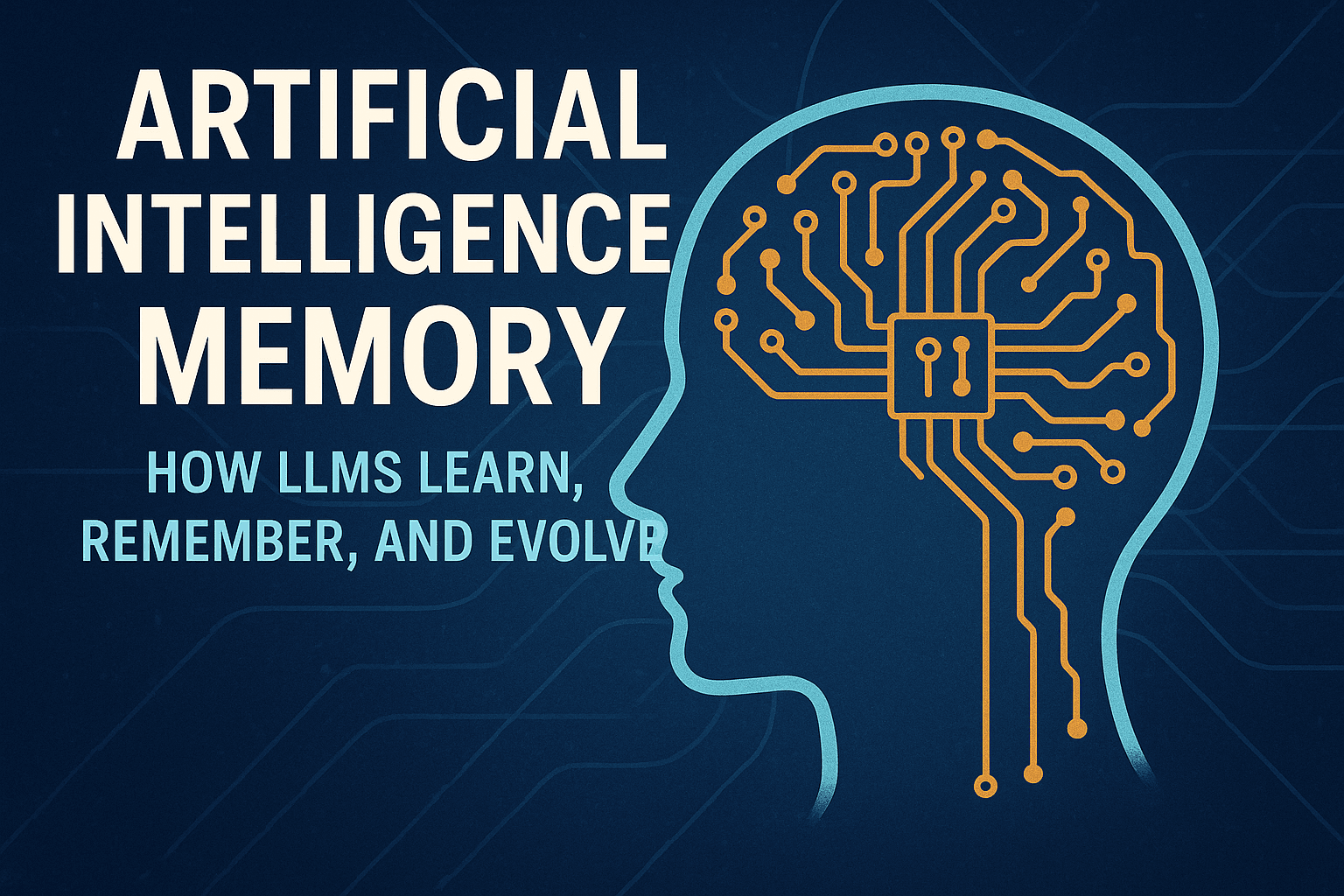Artificial Intelligence Memory: How LLMs Learn, Remember, and Evolve

Artificial Intelligence Memory: How LLMs Learn, Remember, and Evolve
Can AI actually remember? If so, how does memory shape the future of artificial intelligence, large language models (LLMs), and the way we interact with these systems? AI memory isn’t just a technical buzzword—it’s rapidly becoming the core difference between static, rule-based automation and dynamic, context-aware intelligence.
What "Memory" Means in AI
AI memory is much more than storing data. It’s the ability of digital systems to retain context, recall previous interactions, and learn from experiences, echoing the foundational traits of human cognition. Memory lets an AI system go beyond isolated responses and support long-term, personalized interactions—whether serving as a chatbot, a teacher, a healthcare assistant, or a research partner.
Types of AI Memory
Modern AI systems use several memory strategies, each with unique technical designs and implications:
Short-Term (Working) Memory: Remembers input and context during a single session or conversation. When the session ends, this memory is wiped. It keeps interactions coherent within the current conversation but offers no true “learning.” Common tools: virtual assistants, simple chatbots.
Long-Term Memory: Stores user preferences, patterns, or facts over extended periods, sometimes across multiple sessions. Enables the AI to remember a person’s previous requests, adapt responses, and build personalized profiles.
Episodic Memory: Recalls specific events or individual interactions—helping AI agents track progress, refer back to detailed history, or maintain narrative continuity.
Semantic Memory: General factual knowledge and language rules—the “world knowledge” embedded into the actual parameters of the AI, learned during model training and fine-tuning.
These memory systems can be either parametric (built into the model’s internal weights and connections) or non-parametric (stored externally in databases, knowledge graphs, or retrieval systems).
How AI Memory WorksDiagram of a neural network showing input, hidden, and output layers fully interconnected
Context Windows and Sliding Buffers: Most LLMs use a context window—processing a “slice” of recent dialogue. Beyond this window, they lose recall unless advanced memory mechanisms are present.
Summarization and Compression: Some AI agents condense old conversations into summaries to maintain relevant context without overloading memory.
Retrieval-Augmented Generation (RAG): The system stores entire interaction histories or documents externally, then brings relevant snippets back into context when needed, ensuring smart recall instead of simple persistence.
Graph-Based & Temporal Memory: Advanced tools use knowledge graphs or time-aware scoring to connect related facts and adapt responses based on recency and importance.
Why Memory Matters for AI AdoptionMemory is changing the way AI is applied in medicine, education, customer support, and beyond:
Healthcare: AI assistants with episodic memory can build patient profiles, recall diagnoses, and personalize treatments.
Education: Personalized tutors use long-term memory to track progress and adapt lesson plans.
Customer Service: AI remembers previous tickets and user preferences, resolving issues more efficiently.
Personal Assistants/Collaboration: Memory lets assistants learn schedules, routines, and workplace context, making digital collaboration richer.
Without memory, AI is “forgetful”—unable to evolve, personalize, or support users meaningfully over time.
Challenges, Risks, and Future DirectionsDiagram of the human brain highlighting the hippocampus and its role in converting short-term to long-term memory and spatial navigation
Quadratic Scaling Bottleneck: The memory requirements in transformer-based models scale fast as input length grows, limiting practical use over very long contexts.
Privacy & Security: Persistent memory means more private user data stored—raising concerns about consent, data leakage, and the risks of accidental recall in inappropriate contexts.
Bias & Accuracy: Errors or unwanted biases stored in AI memory can perpetuate misinformation or skew future decisions.
Lock-In Effect: Users may become tethered to a particular AI’s memory profile, creating switching costs and ethical dilemmas.
Solutions:FlashAttention, memory compression, and retrieval systems mitigate technical bottlenecks.
Privacy control tools (user consent options, federated learning, encryption) help users manage what the AI remembers.
The Road Ahead: Responsible, Human-Centric Memory
AI memory is advancing fast—with researchers exploring quantum memory, brain-inspired architectures, and collaborative agent networks.
Key questions for the future:
Who owns the memories AI collects?
How do we balance convenient recall with privacy and control?
How can AI memory stay accurate, unbiased, and aligned with human values?
Will memory make AI systems more autonomous, creative, and supportive—or create new problems of agency and trust?
Final ThoughtsIllustration of vector embeddings showing how objects are transformed into multi-dimensional representations by an embedding model
Memory is no longer just a technical upgrade; it’s the foundation for AI systems that grow with users, support complex tasks, and fuel digital transformation. The challenge now is to develop memory wisely—so it empowers and protects, not exploits or confuses.
AI’s ability to remember will redefine how we interact with machines, raising new questions for technologists, ethicists, and society. As we build these systems, we must ensure their memory serves people, not just algorithms.